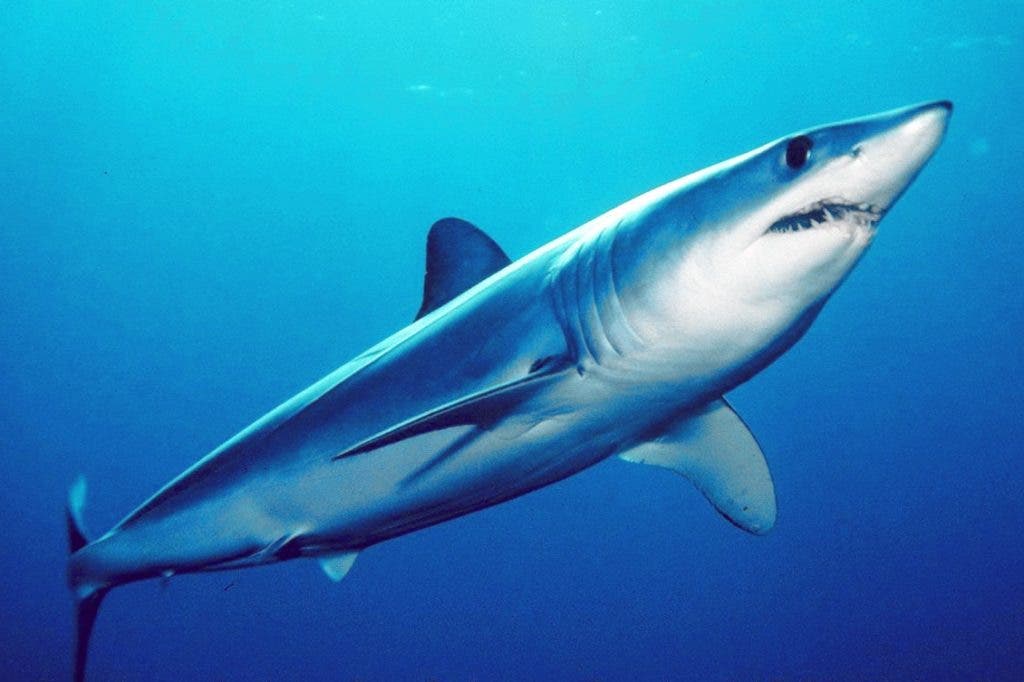Sharks get a lot of media attention. They are often in movies, the news, Shark Week, pop culture… There is a whole genre of film dedicated to portraying sharks as massive killing machines, usually with women in bikinis. In an attempt to clear those things out, scientists are trying to be more vocal in spreading the truth about sharks. But do we actually know all the facts about these ancient creatures? It turns out that many commonly believed stereotypes and information about sharks are not actually true. Here’s the scoop on the most common shark myths:
Sharks can’t get cancer
A book entitled “Sharks don’t get cancer: how shark cartilage could save your life” written by I. William Lane and Linda Cormac in 1992, advocated the consumption of shark cartilage as a cure for cancer. It claimed that sharks do not often get cancer due to a protein in their cartilage that keeps blood vessels from growing and cancer from spreading. With this chain of logic, they asserted that consuming powdered cartilage fights cancer. Shark cartilage was the most popular anti-cancer treatment recommended by health food stores in the late 1990s, based on this assertion.

In 20 years of study, there has been no scientific evidence that shark cartilage can eradicate human cancer cells. Most researchers agree that the proteins found in shark cartilage powders are too large for the human digestive system to absorb into the bloodstream. Additionally, sharks do get both malignant and benign tumors. However, actual cancer rates in sharks are not known so it impossible to assert whether they get cancer often or rarely.
Even if cancer in sharks is relatively uncommon, this could be due to multiple causes. For example, sharks could be exposed to fewer carcinogens or have internal systems that eliminate mutagens and repair DNA. Even if sharks do have mechanisms that prevent them from getting cancer, it likely does not work in the same way exactly as human cancer. Any active substances found in sharks would not convey benefits by being consumed raw. The only impacts this treatment has is to cause sharks to be overfished and draw cancer patients away from treatments that have actually been proven to work.
Sharks always swim Jaws-style
Thanks to the movie Jaws, we all have an image in our heads of a shark’s threatening dorsal fin sticking out of the water as a warning that it will soon strike. It turns out that this image is mostly for dramatic effect rather than accuracy. Sharks in the wild very rarely swim with their top fins exposed. Most sharks swim close to the bottom or in open water. A case where they do expose their dorsal fins is when the water is so shallow that they can barely swim. Some sharks swim into extremely shallow coastal water to give birth.

A reason that sharks may not expose their dorsal fins is that they could get sunburnt. Although this may sound silly, it has been proven that sharks suntan and produce melanin through exposure to the sun. Scalloped hammerhead sharks (Sphyrna lewini) change from a light tan colour to a dark brown/black colour when exposed to the sun for a few weeks. Since they can tan, it would make sense that the sun can also damage them. Sticking their top fin out of the water often could result in sun damage.
Sharks are deadly!
Although shark attacks are dramatized, they are extremely uncommon. First of all, out of all the shark species, more than 500, 97% of them, are harmless to humans. Unfortunately, a “killer” reputation is often applied to all sharks. A huge variety of types of sharks actually exists. There are sharks that only eat plankton, some that live at such depths that they are rarely seen, bottom feeders, tiny sharks, and saw-nosed sharks. Three shark species are responsible for the most human attacks: great white (Carcharodon carcharias), tiger (Galeocerdo cuvier), and bull (Carcharhinus leucas) sharks. They have been the attackers in 63% of known shark attacks.

Then there is the frequency of shark attacks, 828 shark attack have been recorded from 1580 to the present, and only 160 of these have resulted in fatalities. On average there are 5-15 shark related human fatalities a year. More people die per year from selfies, falling coconuts, choking, ants, and hippos (each compared on their own) than by shark attacks. On the other hand, humans kill up to 100 million sharks a year for their cartilage, fins, or as bycatch.
Sharks drown if they stop swimming
This statement is only partly true; sharks breathe in two ways. More ancient shark species breathed by buccal pumping. Their mouth muscles actively draw water into their mouths so that it flows across their gill membranes and out the gill slits. Bottom feeders such as nurse or angel sharks use this method since they don’t move so much. However, most modern sharks breathe with ram ventilation. These sharks swim fast to force (“ram”) water into their mouths. Sharks get enough oxygen this way and most can change breathing techniques if they need to. If they are swimming slowly, they can breathe with buccal pumping.

Some sharks don’t have strong enough muscles to actively pump water, so they are restricted to constantly ram breathe (such as the great white, mako, salmon, and whale sharks). They are the ones that are believed to drown if they stop swimming. Recently, researchers have observed these sharks taking breaks in underwater caves or on sandy seafloors. It is unclear how these sharks can survive these breaks, maybe the locations had higher oxygen levels or lower salinity. Anyhow, it appears that they can stop swimming without dying. On a related note, sharks don’t sleep but have some periods of activity followed by periods of rest.
There you have it —the most common shark myths revealed!


